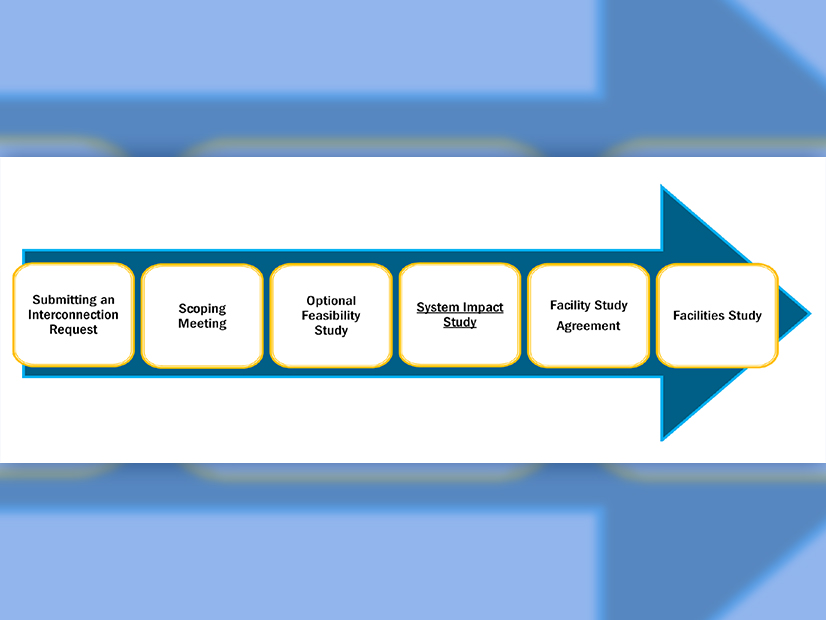RENSSELAER, N.Y. — NYISO officials said Wednesday they will begin stakeholder discussions early next year on revising the interconnection process to make it more efficient, calling it one of their top priorities for 2023.
Zach Smith, vice president at NYISO, told the Management Committee that the ISO is considering a “queue window-based approach,” where each stage of the study would be more meaningful and potentially binding.
The new approach would replace the current three-step study structure, which includes an optional feasibility study and a non-binding system reliability impact study (SRIS) before the facilities study, which results in binding cost allocations.
Smith said the ISO envisions a “clustering approach” where projects are put into a study together to evaluate their joint impact. Smith emphasized, however, that this was simply a preview of what will be discussed with stakeholders and that nothing is settled.
Smith said the additional changes would require tariff revisions and FERC approval, unlike changes the ISO has already made — adding interconnection support liaisons and project managers; improving the interconnection portal; streamlining the SRIS — and ones in process — developing templates to shorten SIS reports and improving handling of material modification requests. (See NYISO Identifies 35 Projects for Narrowed SRIS Scope.)
The ISO expects to begin discussions in the MC, the Transmission Planning Advisory Subcommittee and Electric System Planning Working Group as soon as January and no later than February. “We do not intend to hold up on any improvements waiting” for an order from FERC’s June Notice of Proposed Rulemaking on interconnection generator interconnection procedures and agreements (RM22-14), Smith said. (See FERC Proposes Interconnection Process Overhaul.)
Smith said NYISO is acutely aware of potential tradeoffs stemming from pursuing faster methodologies but is committed to ensuring that project reliability is never sacrificed.
“Do you want speed or do you want flexibility?” Smith said. “One will have to be sacrificed for the other.”
Smith added that it is important for FERC to maintain “independent entity variations” enabling RTOs to tailor solutions to their own regional problems.
CEO Rich Dewey said that the ISO is committed to addressing both the effectiveness of these processes and the customer communication around them. Dewey told stakeholders he understands trade-offs will occur as further changes are made to find the “sweet spot” between flexibility and efficiency.
Mark Reeder, representing the Alliance for Clean Energy New York, commended the ISO for its continued focus on improving the interconnection process: “That’s greatly appreciated.”


